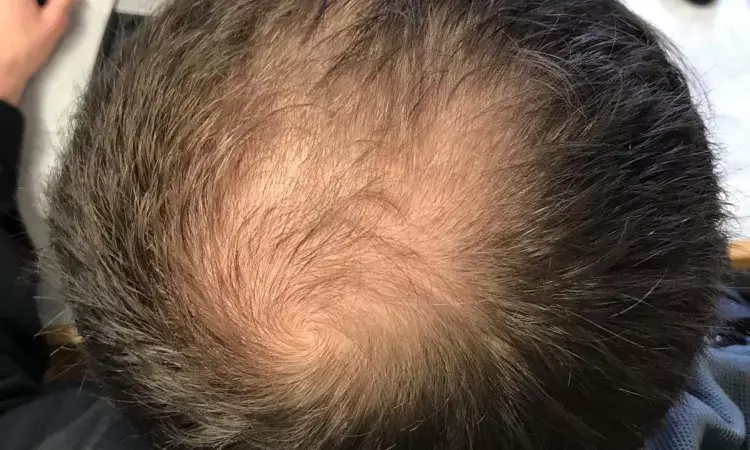- Home
- Medical news & Guidelines
- Anesthesiology
- Cardiology and CTVS
- Critical Care
- Dentistry
- Dermatology
- Diabetes and Endocrinology
- ENT
- Gastroenterology
- Medicine
- Nephrology
- Neurology
- Obstretics-Gynaecology
- Oncology
- Ophthalmology
- Orthopaedics
- Pediatrics-Neonatology
- Psychiatry
- Pulmonology
- Radiology
- Surgery
- Urology
- Laboratory Medicine
- Diet
- Nursing
- Paramedical
- Physiotherapy
- Health news
- Fact Check
- Bone Health Fact Check
- Brain Health Fact Check
- Cancer Related Fact Check
- Child Care Fact Check
- Dental and oral health fact check
- Diabetes and metabolic health fact check
- Diet and Nutrition Fact Check
- Eye and ENT Care Fact Check
- Fitness fact check
- Gut health fact check
- Heart health fact check
- Kidney health fact check
- Medical education fact check
- Men's health fact check
- Respiratory fact check
- Skin and hair care fact check
- Vaccine and Immunization fact check
- Women's health fact check
- AYUSH
- State News
- Andaman and Nicobar Islands
- Andhra Pradesh
- Arunachal Pradesh
- Assam
- Bihar
- Chandigarh
- Chattisgarh
- Dadra and Nagar Haveli
- Daman and Diu
- Delhi
- Goa
- Gujarat
- Haryana
- Himachal Pradesh
- Jammu & Kashmir
- Jharkhand
- Karnataka
- Kerala
- Ladakh
- Lakshadweep
- Madhya Pradesh
- Maharashtra
- Manipur
- Meghalaya
- Mizoram
- Nagaland
- Odisha
- Puducherry
- Punjab
- Rajasthan
- Sikkim
- Tamil Nadu
- Telangana
- Tripura
- Uttar Pradesh
- Uttrakhand
- West Bengal
- Medical Education
- Industry
Study details relative efficacy of different drugs for treating Androgenic alopecia

Canada: Findings from a meta-analysis, published in the journal JAMA Dermatology contribute to the comparative effectiveness literature for androgenetic alopecia (AGA) therapies with regard to the compared interventions.
"With the accumulation of efficacy data from head-to-head trials, there could be a better sense of the relative efficacy of 5-α reductase inhibitors and minoxidil' different doses," Aditya K. Gupta, Mediprobe Research Inc, London, Ontario, Canada, and colleagues wrote in their study.
Androgenetic alopecia is a common form of hair loss in both men and women. The enzyme 5-α reductase is convolved in the etiologic factors in this condition.
There are knowledge gaps regarding the relative efficacy of 3 commonly used drugs for androgenetic alopecia AGA, namely, the two 5-α reductase inhibitors finasteride and dutasteride, and minoxidil. To fill this knowledge gap, Dr. Gupta and his team conducted the study to examine the relative efficacy of any dose and administration route of minoxidil, dutasteride, and finasteride for the treatment of male AGA.
For this purpose, the researchers performed systematic searches in PubMed on March 5, 2021. The studies that investigated monotherapy with any dose and administration route of minoxidil, dutasteride, and finasteride were deemed eligible for the meta-analysis.
Following 2 stages of screening, 23 studies were eligible for quantitative analyses from 848 records obtained from PubMed search. The mean age of patients ranged from 22.8 years to 41.8 years.
Study endpoints were changes in total and terminal hair count after 24 and 48 weeks of therapy. The 4 endpoints were quantified in hairs per square centimeters.
Following were the study's key findings:
- The greatest increase in total hair count at 24 weeks (ie, first endpoint) was with 0.5 mg/d of dutasteride, which was significantly more efficacious than 1 mg/d of finasteride (mean difference, 7.1 hairs/cm2) and minoxidil (0.25 mg/d, 5 mg/d, and 2% solution).
- The greatest increase in terminal hair count at 24 weeks (ie, second endpoint) was with 5 mg/d of minoxidil, which was significantly more efficacious than the 0.25-mg/d dose (mean difference, 43.6 hairs/cm2) and its topical forms (in 2% and 5%); 5 mg/d of minoxidil was significantly more efficacious than 1 mg/d of finasteride.
- The greatest increase in total hair count at 48 weeks (ie, third endpoint) was with 5 mg/d of finasteride (mean difference, 10.4 hairs/cm2), which was significantly more efficacious than 2% topical minoxidil (mean difference, 20.7 hairs/cm2).
- The greatest increase in terminal hair count at 48 weeks (ie, fourth endpoint) was with 1 mg/d of finasteride, which was significantly more effective than topical minoxidil (in 2% [mean difference, 32.1 hairs/cm2] and 5% [mean difference, 26.2 hairs/cm2]).
"The findings of this meta-analysis contribute to the comparative effectiveness literature for AGA therapies with regard to the compared interventions," the authors concluded.
Reference:
Gupta AK, Venkataraman M, Talukder M, Bamimore MA. Relative Efficacy of Minoxidil and the 5-α Reductase Inhibitors in Androgenetic Alopecia Treatment of Male Patients: A Network Meta-analysis. JAMA Dermatol. Published online February 02, 2022. doi:10.1001/jamadermatol.2021.5743
Dr Kamal Kant Kohli-MBBS, DTCD- a chest specialist with more than 30 years of practice and a flair for writing clinical articles, Dr Kamal Kant Kohli joined Medical Dialogues as a Chief Editor of Medical News. Besides writing articles, as an editor, he proofreads and verifies all the medical content published on Medical Dialogues including those coming from journals, studies,medical conferences,guidelines etc. Email: drkohli@medicaldialogues.in. Contact no. 011-43720751


